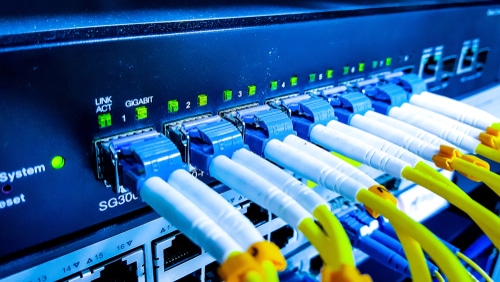Als Berater und Architekt für komplexe IT-Infrastrukturen begegne ich immer wieder dem „Infrastruktur-Bias“. Kurz gesagt: Menschen nehmen Infrastrukturen aller Art als selbstverständlich hin und verlieren mit der Zeit den Blick für die Kunst in der Komplexität. Niemand ruft abends bei seinem Energieversorger an und bedankt sich dafür, dass er den ganzen Tag über jahrelang zuverlässig Strom hatte. Wer sich jedoch das europäische Verbundnetz ansieht, weiß, dass dies an manchen Tagen im Jahr mehr als gerechtfertigt wäre. Französische Atomkraftwerke werden vom Netz genommen, weil die Flüsse zu warm sind, und Ingenieure in der Schweiz öffnen die Wehre von Wasserkraftwerken, um die Netzfrequenz bei 50 Hertz zu halten – alles für den Verbraucher unsichtbar!
Die Probleme der Deutschen Bahn kennen wir alle aus leidvoller Erfahrung. Ich möchte hier die Deutsche Bahn als Organisation in keiner Weise verteidigen, sondern es geht mir darum, dass wir in Deutschland mit über 33.000 Kilometern das dichteste Schienennetz in Europa haben – trotz diverser umfangreicher Sperrungen. Es ist zunächst eine enorme Leistung, dass dieses komplexe System überhaupt funktioniert. Wenn es auf dem Rhein Probleme gibt, spürt man das natürlich bis in den Norden und Süden. Es ist einfach ein kritischer Flaschenhals, und die Züge fahren statisch hintereinander, ohne die Möglichkeit dynamischer Ausweichmanöver. Natürlich vereinfache ich das Thema Schiene hier stark, und es gibt Überholmöglichkeiten. Aber das komplexe Schienensystem ist überlastet oder hat nicht genug Kapazität, weshalb es immer offensichtlichere Probleme gibt. Da der Mangel, und vielleicht auch Misswirtschaft, schon länger gärt, verspürt jeder Bahnfahrer das Bedürfnis nach mehr Kapazität und Investitionen in die Infrastruktur. Damit argumentieren auch Politiker und Bahnmanager, und Forderungen nach mehr Geld für die Bahn finden meist Zustimmung auf breiter Front.
Bei den meisten IT-Infrastrukturen ist „das Leiden“ weniger offensichtlich. Die Systeme sind nicht so alt wie das Schienennetz, und viele Admins opfern „etwas“ aus „nichts“. Die meisten IT-Infrastrukturen sind im Kern etwa 20 bis 30 Jahre alt, und physische Komponenten wie Server und Firewalls wurden regelmäßig ausgetauscht. Vor diesem Hintergrund ist für die meisten Benutzer kein „Deutsche-Bahn-Effekt“ spürbar; Anwendungen laufen, E-Mails kommen an und alles ist in Ordnung. Hier kommt der „Infrastruktur-Bias“ ins Spiel: Die IT-Infrastruktur wird hauptsächlich von unerschrockenen Menschen gewartet und leidet eher still vor sich hin. Entscheidungsträger merken im Tagesgeschäft, dass die Anwendungen laufen und alles in Ordnung zu sein scheint, die Infrastrukturkomponenten „unsichtbar“ in Schränken verstaut sind und alles seinen gewohnten Gang geht. Immaterielle Komponenten wie Active Directory-Verzeichnisse, operative Anwendungen oder Berechtigungsstrukturen sind oft viel älter. Solche buchstäblich „immateriellen“ Komponenten sind naturgemäß noch unsichtbarer als die physischen Komponenten der Infrastruktur.
Genau diese „Unsichtbarkeit“ birgt die Gefahr einer Katastrophe; in den meisten Fällen werden längst überfällige Erneuerungen oder Überprüfungen der Architektur aufgeschoben. Irgendwann kommt der Tag, an dem durch einen Ausfall ein erheblicher Schaden entsteht oder, noch schlimmer, der gesamte Betrieb durch Ransomware unterbrochen wird. Hier ist guter Rat meist teuer und das Geld ist unweigerlich verloren. Aus diesem Grund plädiere ich dafür, dass Unternehmen mehr Zeit, Geld und Aufmerksamkeit in Vorsichtsmaßnahmen hinsichtlich der Verfügbarkeit ihrer IT-Infrastruktur investieren.
Man sollte nicht dem Denken verfallen, dass „unserem Unternehmen nichts passieren wird“. Die Frage ist nicht, ob, sondern nur wann. Entscheidungsträger in Unternehmen sollten ein grundlegendes Verständnis für die Komplexität von IT-Infrastrukturen entwickeln, aber IT-Manager sollten ihnen auch die Möglichkeit geben, ein Verständnis für diese Komplexität aufzubauen. Beide Parteien sollten dieses Thema mit Respekt für die „Kunst“ der anderen Partei angehen.


